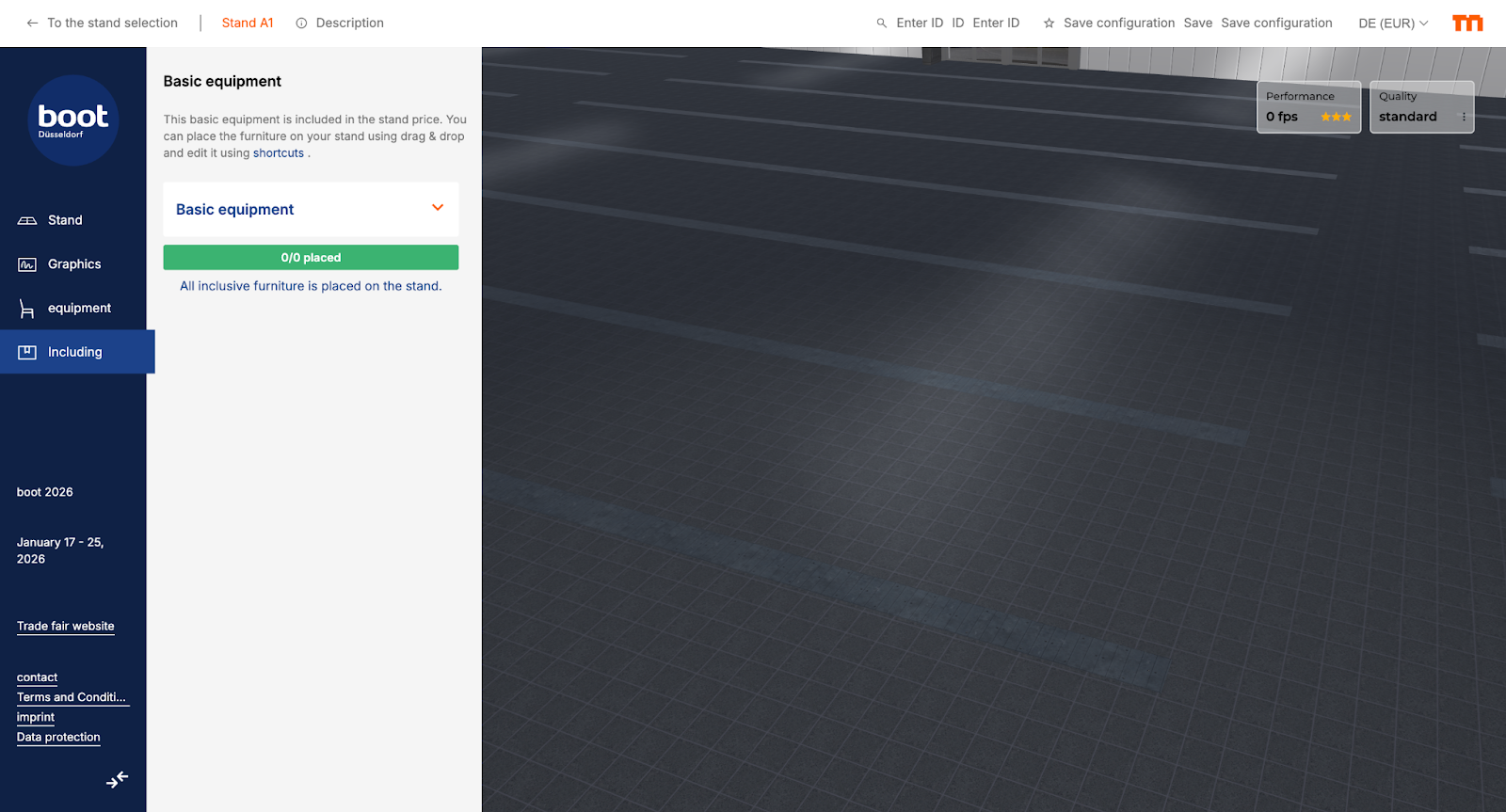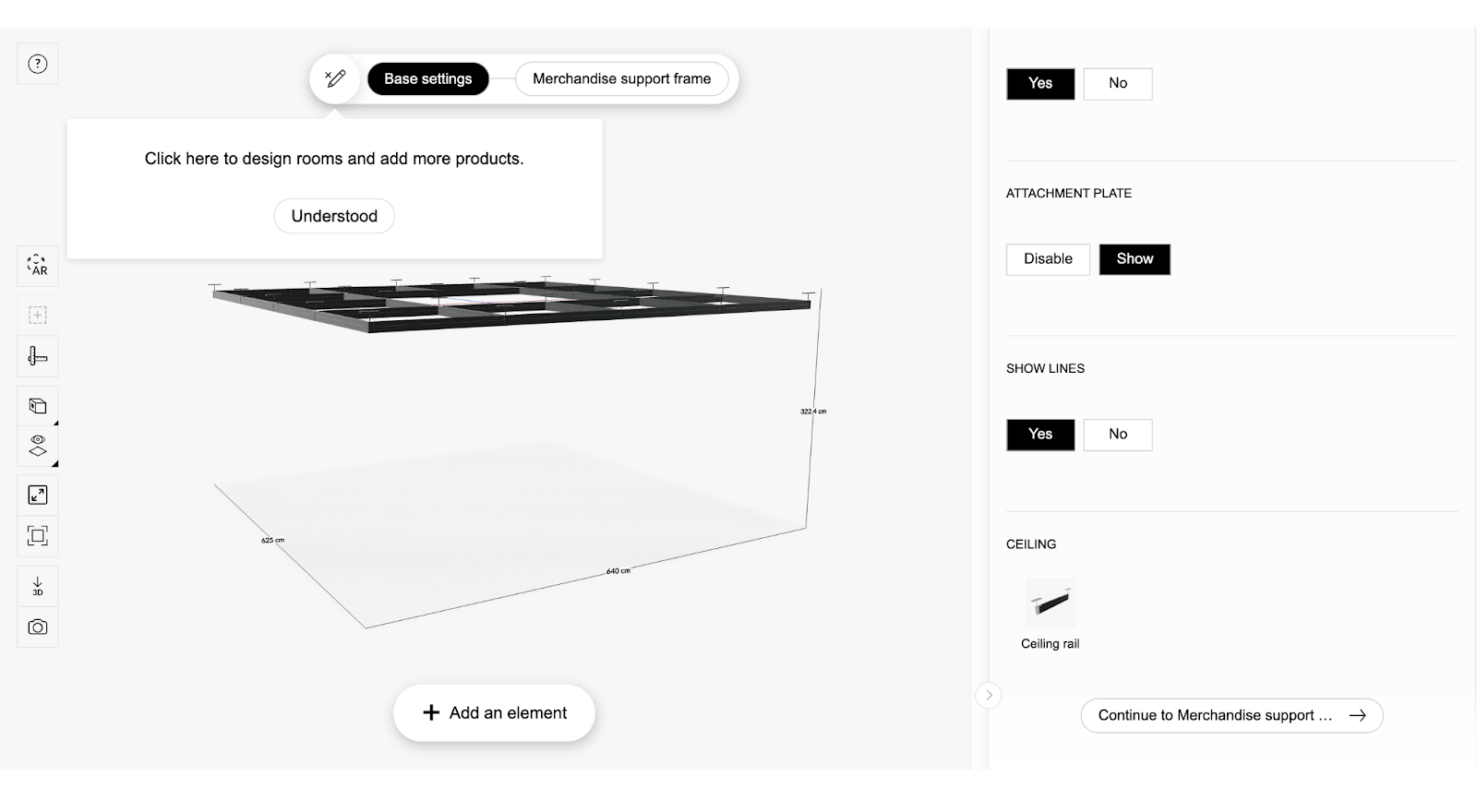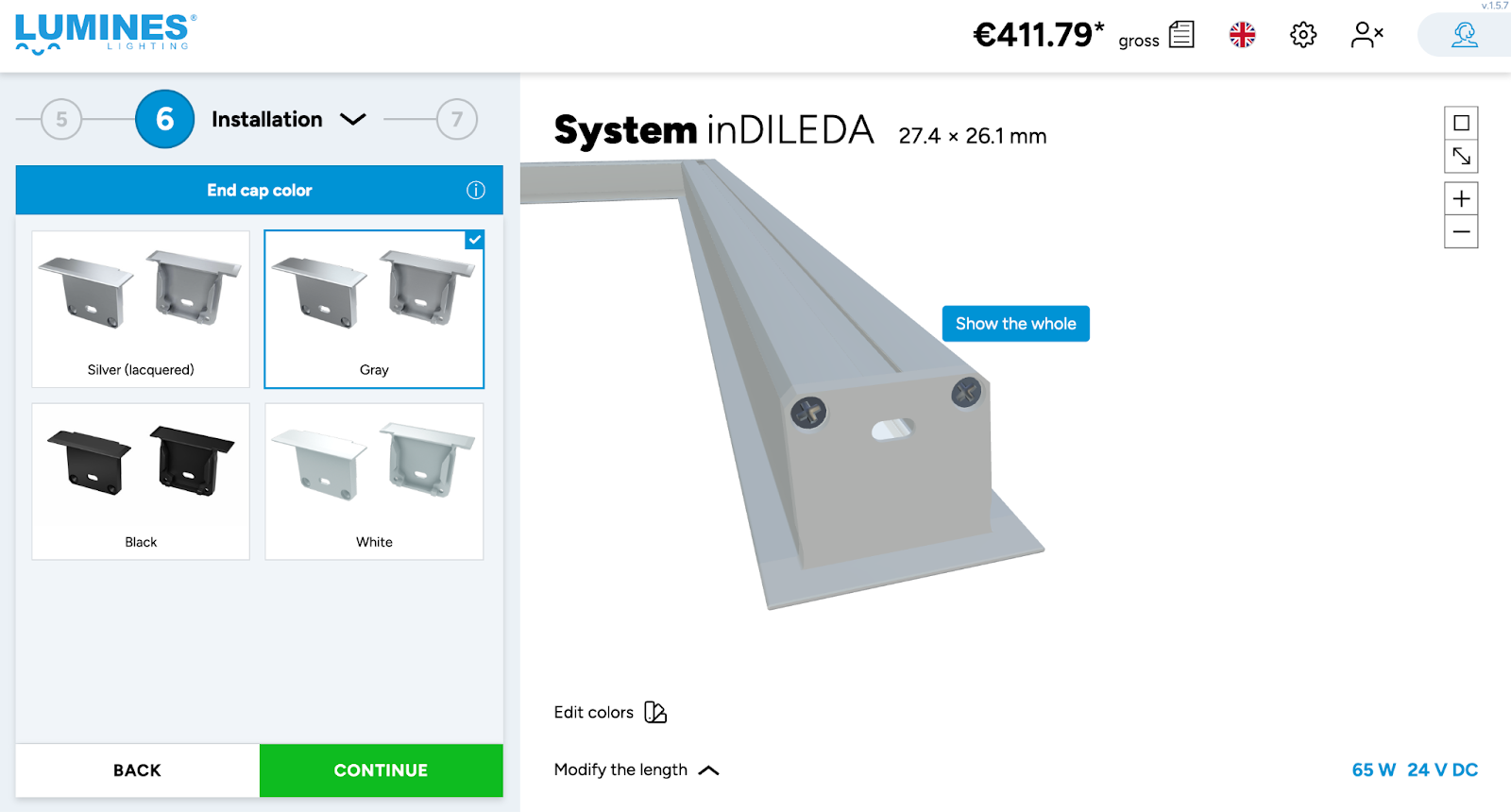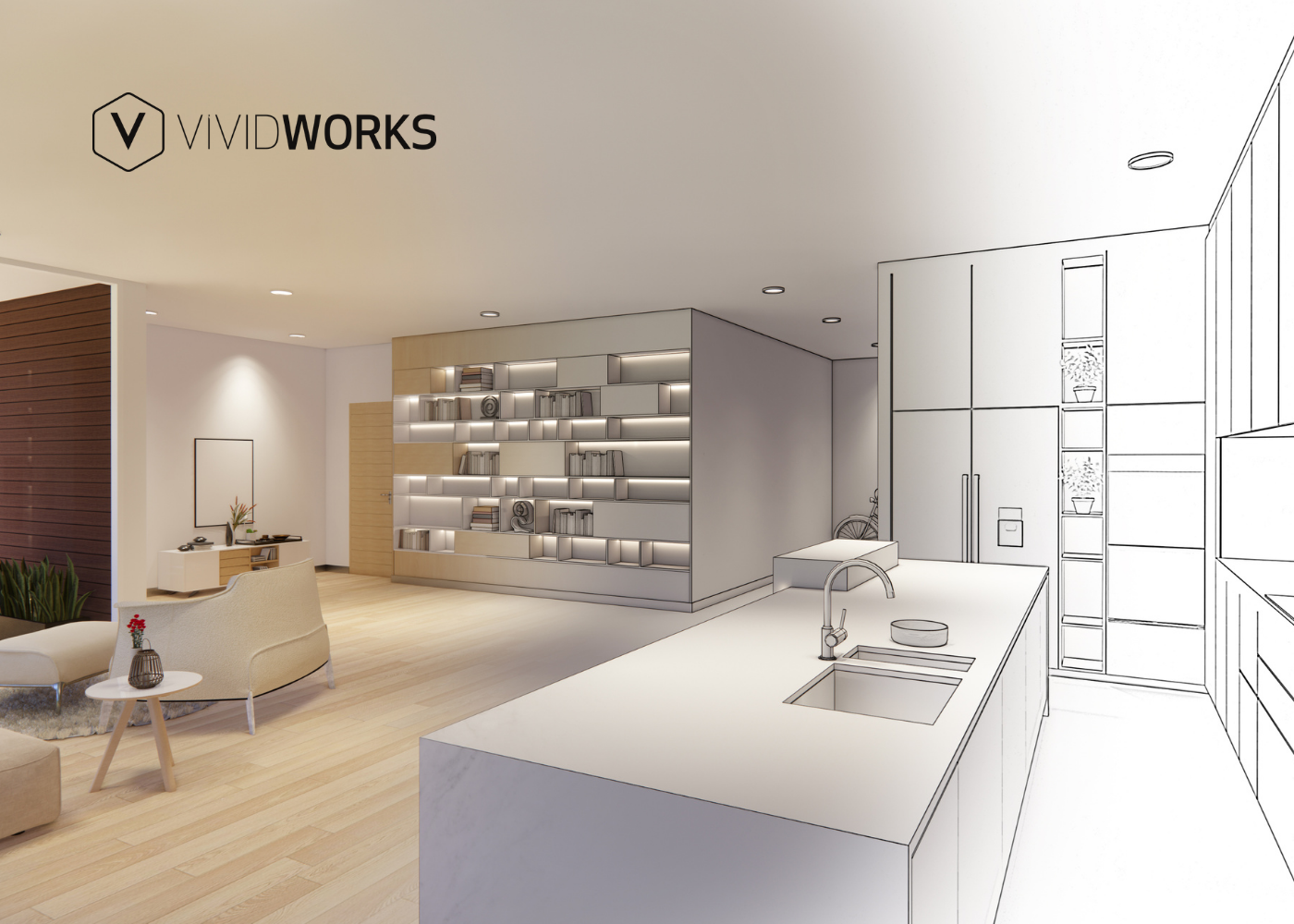Custom fixtures whether gondola shelving, retail displays, or fully bespoke units require a high level of accuracy to minimize errors and product returns. Thus, it is crucial to ensure clear, precise communications between buyers and salespeople, designers, manufacturing teams, and others. 3D product configurators can make that possible by enabling users to interact with fixture designs from every angle for a deeper understanding of their displays in reality before making decisions.
The blog today will provide real-world use cases and a detailed checklist for fully utilizing 3D configurators. From that, you can approach their implementation with confidence and clarity.
Right now, let’s jump right into it for more details!
What is a 3D Product Configurator?
A 3D product configurator is advanced product configuration software that allows users to build, customize, price, and order items in real-time 3D. With custom fixtures, this configurator enables the precise configuration of complex designs and offers detailed visualization for each customization. From that, you can streamline the design, sales, and manufacturing processes without mistakes. This explains why 3D visual product configurators aren’t only a visualization tool but also an asset that can boost efficiency with 3D/AR content for increased conversions by 94%.
3D Visual Configurators Shine: Use Cases by Products & Personas
Product configurator use cases might be found in various fixture sectors and business functions. Therefore, their development and implementation often vary based on specific needs. The next parts explore how these tools bring value across different product types and internal team roles. This is essential to clarifying where 3D configurators deliver the most significant impact in fixtures.
Use Cases by Products
Use Case 1: Gondola Shelving Systems
Gondola shelving is a staple in retail and often involves numerous variables such as size, number of shelves, and materials. Using 3D product configurators, retailers can configure fixtures with desired dimensions, finishes, and layout options that match their exact needs. Advanced features like Augmented Reality (AR) and 3D room planning also allow users to visualize their own designs in real-world settings, making it easier to evaluate the fitting level before making any purchase.
Grand + Benedicts is an inspiring example of this case. It is a trusted retail store fixture in Portland, standing out by selling custom shelving systems and modular designs. However, the company faced challenges in visualizing its unique product, Lozier Gondola Shelving, to drive sales. Back-and-forth conversions between buyers and salespeople also took time and led to mistakes. That’s why Grand+Benedicts decided to adopt a 3D shelving configurator powered by VividWorks.
With this visual configurator tool, “customers no longer need to contact us for quotes—they can do it all on their own,” says Camilla, Director of Marketing. This means that VividWorks 3D configurator not only supports real-time 3D visualizations but also enables the dynamic function so that users can see instant prices and quotes as they make a modification. It is known as Visual Configure, Price, Quote (Visual CPQ), allowing for configuring and seeing prices simultaneously. This is essential to increasing customer experience with clarity and saving efforts for sales teams.
Use Case 2: Custom Display Units
The following case is relevant to custom displays. From trade show booths to cosmetic displays and high-tech stations, this fixture type requires unique branding, sizing, and modular elements. Apparently, static visuals or PDFs are not enough to imagine and clarify what will show in reality.
That’s where 3D product configurators come in. They increase stimulation by allowing users to adjust color schemes, swap logos, change dimensions, and see their display in a 3D environment. So, the brand’s marketing and sales teams can effortlessly pitch highly tailored display concepts.

Messe Düsseldorf, a major player in the trade fair industry, adopted the Fair Booth Configurator to empower customers to design their trade fair appearances freely using realistic visualizations. Users start by selecting a target fair trade event and are then directed to a respective configurator with lots of layout and branding options. They can project, customize, and perfect their displays.
Use Case 3: Modular Store Fixtures
Modular systems have many interchangeable, complex components, especially custom designs. Thus, a small error could prevent the completion of your store fixtures, and you would need to start over. This truly challenges retail fixture manufacturers in maintaining precision and efficiency.
A 3D product configurator addresses this aspect by incorporating predefined rules and logic that guide users through manufacturable configurations. As a result, manufacturers reduce customer product returns due to errors, and customers can benefit from hassle-free retail fixture installation.

Visplay uses its 3D Multi-Lane Configurator to satisfy Laura Stammer’s needs to enhance the display of healthcare items or cosmetics with shelving systems for the Schwalbanger Pharmacy. This 3D configurator allows the owner to customize fixture modules and estimate the required quantity, ensuring the best fit for her pharmacy store. This helped boost her trust and satisfaction.
Use Case 4: Light fixture
In this sector, e-commerce visual product configurators empower users to specify dimensions, light output, material finishes, and mounting options and then see all customizations in real time. This experience streamlines the sales processes and effectively enhances customer satisfaction.

LUMINES is one of the leading lighting brands that utilizes a 3D light configurator to offer a unique, personalized shopping journey for lighting fixtures. The brand clarifies the 7-step process with its configurator, starting with selecting room and lighting types and ending with a detailed summary. By strictly following this guide, buyers can easily have the desired lighting system for their space.
Use Cases by Personas
Beyond product-specific applications, 3D visual product configuration platforms offer tailored value across various internal teams. Each department has unique responsibilities, so the way they use and benefit from these configurators will differ. Let’s take a look at how teams leverage them:
- Sales Teams
Thanks to 3D product configurators, salespeople can provide customers with accurate quotes and compelling visualizations of custom fixtures in real time. They don’t need to communicate back and forth with customers to clarify their demands and design or redefine the fixture design. This encourages customers to close deals faster, while sales teams save effort and boost sales.
- Marketing Teams
Adding a visual 3D product configurator to online stores can help brands transform passive browsing into an interactive experience for higher conversion. Additionally, marketing teams focus on configurators' outputs for engaging content. High-quality renders, interactive product tours, and AR experiments can be created, enhancing product promotion and customer engagement.
- Product Owners
Product owners can benefit from the insights gained through customer interactions with their product configurators. Data on popular configurations, common fixture customizations, and frequently requested features can inform future product development and strategic decisions.
- Design Teams
3D product configurators can ensure that all custom options are technically feasible. It provides a shared visual language, reducing misinterpretations and ensuring that the final custom fixture aligns with the initial intent. The use of CAD assets in configurators helps maintain design integrity.
- Manufacturing Teams
With precise specifications and product-ready data provided by 3D configurators, manufacturing can minimize errors and costly rework. By integrating with e-commerce platforms like Shopify, Magento, and WooCommerce; ERPs; and CRMs, these configurators enable automation of the order-to-production workflow, resulting in faster lead time and boosted operational performance.
Implementation Checklist: What You Need Before You Build a 3D Configurator
While visual product configurator platforms work well for custom fixtures, careful planning is essential to ensure the best results for performance and transformation in sales and conversions. Here is our checklist of key elements that you should consider before launching your configurator:
- Define product rules and logics (variations, SKUs, dependencies, and measurements)
- Establish clear business goals and objectives for using 3D configurators.
- Have accurate CAD files/high-quality 3D models ready for integration
- Coordinate sales, design, IT, and manufacturing teams on how configurators work
- Decide how to manage your configurator: hosted externally or embedded directly.
- Have a rollout plan for testing, training, and tracking the performance.
Talk to us to get more advice from VividWorks' experts on developing a tailored 3D product configurator for your custom fixtures. And while you’re here, don’t forget to check out our blogs for more insights, success stories, and implementation tips on product configurators in eCommerce.
Table of Content
-3.avif)
Streamline your process today!







